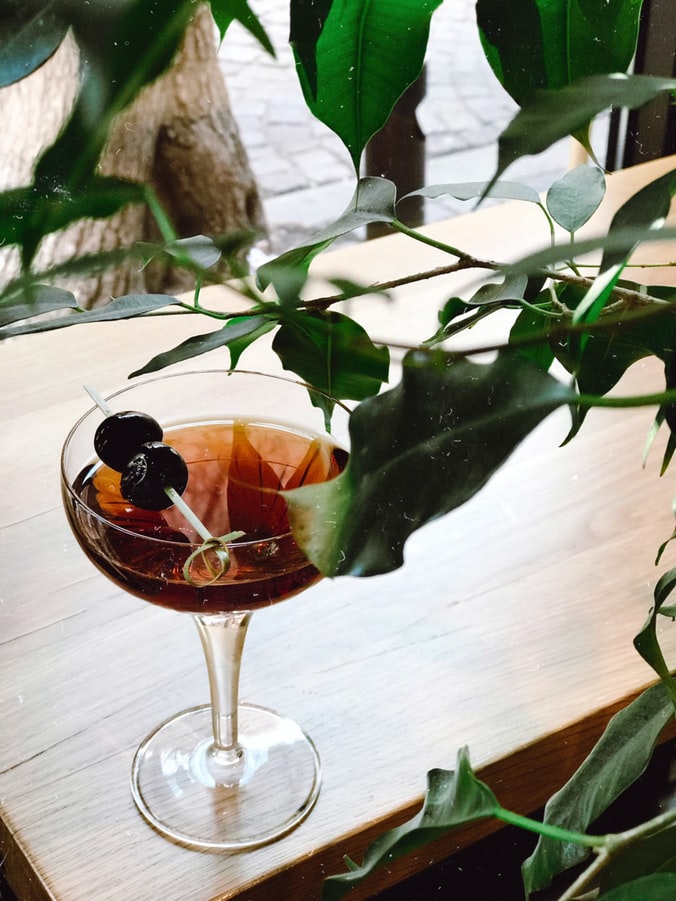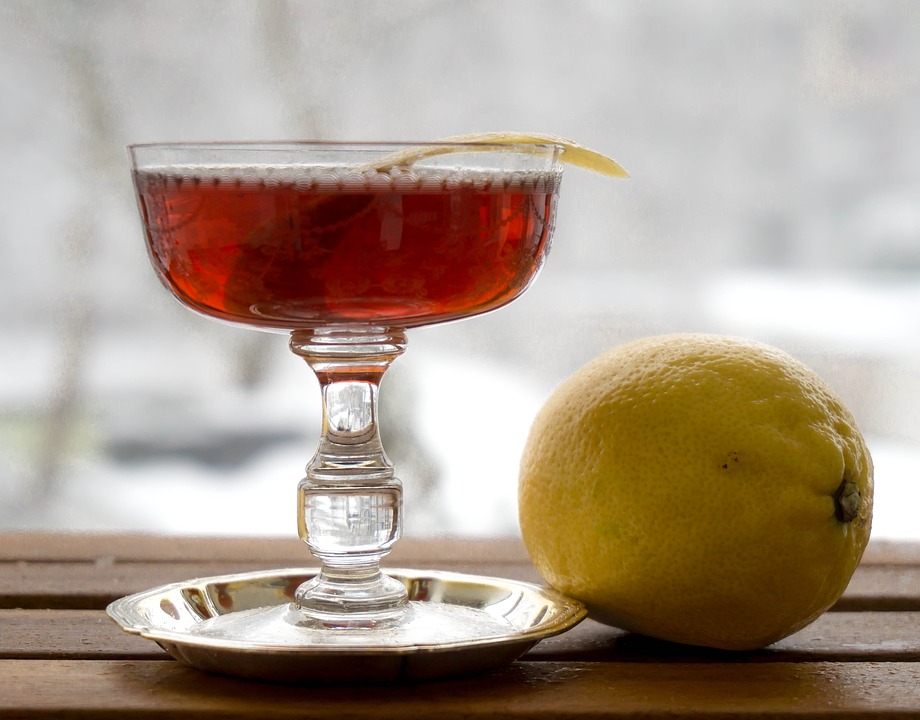The Manhattan is a cocktail that is not for the faint of heart, which makes it a perfect tribute to the city it’s named for. It’s a drink that predates Prohibition (and survived!) and will continue long into the future, so long as today’s mixologists continue to explore ways to tinker with the sophisticated classic. Modern iterations of the cocktail involve experimenting with everything from the addition of liqueurs, combining different kinds of vermouth and whiskey in the same glass— and even mezcal infusions, contributing to the cocktail renaissance that we’ve found ourselves happily flung into. But for our purposes, let’s stick to the Manhattan’s roots.
Origins
The Manhattan was invented in the 1880s, or thereabouts, in either the Manhattan Club or the Manhattan Cafe, though the Club’s claim seems to be the most agreed upon location. There is even a theory that Winston Churchill’s mother had a hand in its creation but authorities on the subject dismiss that as a possibility (she was pregnant and in England at the time.) At the time of its creation it was composed of equal parts whiskey and sweet vermouth with a dash of orange bitters, but somewhere in the 1930’s bartenders settled into a 2-1-2 (whiskey, vermouth, bitters) ratio and added a Maraschino cherry as a garnish. Thus, the Manhattan as we know it was born.
Building the Manhattan
The nature of the drink is largely dependent on the components of it. Like all classic cocktails, the simplicity of the recipe demands the highest quality ingredients, so choose carefully. For a lighter whiskey go with a lighter vermouth. If you want something heavy and robust, pick a vermouth to match. They have to play well with each other. The type of vermouth you use is also important. Traditionally, the Manhattan is made with a sweet (usually Italian) vermouth, but if you want a ‘dry Manhattan’ choose a dry vermouth. Unlike the Martini, dry in the case of a Manhattan does not mean less vermouth but simply switching out the type. A ‘perfect’ Manhattan (like a perfect Martini) is equal parts sweet and dry vermouth, but whatever you choose to go for, the goal is to obtain a happy marriage of flavor. There is nothing more sinful than a poorly balanced Manhattan, and that involves not only the quality of the ingredients but the weight of the vermouth or the intensity of whiskey as well. It’s best to try a few combinations to see what you like.
Most people think the older a spirit is the better it is for these purposes, but that’s not necessarily true. Most experts say that just because a spirit is older, the mix of what goes in (or the ‘mash’, which well get to in a minute) will often be completely different than a younger bottle of the same type. The composition of the mash is essential, as striking the right balance of flavor is the groundwork of any good whiskey. Different grains will achieve a different profile in each composition, or ‘mash bill.’
The mash
This means what grain the whiskey is made from. The traditional whiskey for a Manhattan is rye, though most bar-goers opt for bourbon for its softer, more approachable flavor. Rye is significantly spicier, and since it has a cleaner, more ‘cereal’-like taste, it pairs well with the herbal notes of vermouth. Rye whiskey must be made with at least 51% rye and paired with malted barley or other grains. Bourbon is made primarily with corn, hence the smoother, sweeter flavor profile. The more corn present in a mash, the sweeter the spirit will be and more ‘rounded’ the spirit will taste (corn will also yield a higher alcohol content.)
The wood of the barrel the spirit is aged in and the method of ageing are also significant factors, but we won’t get into that. Let’s get to drinking!
The recipe
Assembling a Manhattan is simple:
- 2 ounces rye whiskey
- 1 ounce sweet vermouth
- 2 dashes Angostura bitters
Take your ingredients and pour them into a mixing glass over cracked ice. Stir 30-50 times to ensure all components are blended smoothly together— but never shake. Shaking will make the Manhattan foamy and not how it’s meant to be served. (How gauche.)
Strain into a chilled glass and garnish with a Maraschino cherry, a slice of orange peel, or both! It’s important that your glass be thoroughly chilled since the Manhattan is meant to be served as cold as possible (sounds like a New Yorker, eh?) We recommend about 30 minutes in the freezer.
For cherries, try to go with the real thing. We’re not talking the bright red cherries that usually top your ice cream sundaes. The best cherries come drenched in a rich, dark, maraschino liqueur, like Luxardo Maraschino Cherries.
Pro tip: If you choose to go dry, opt for lemon peel over the cherry or orange as the sharper flavors will clash with their sweetness.

